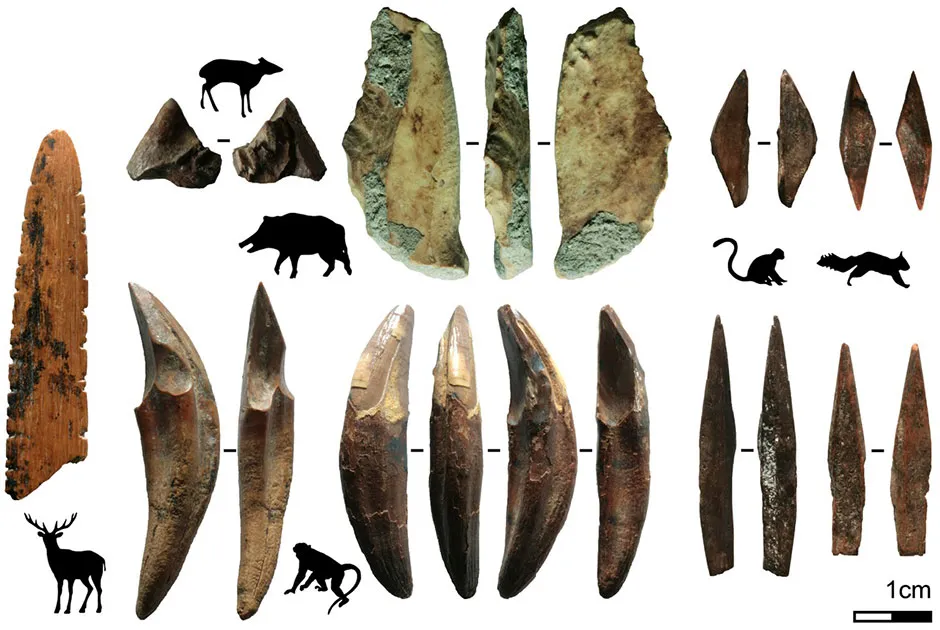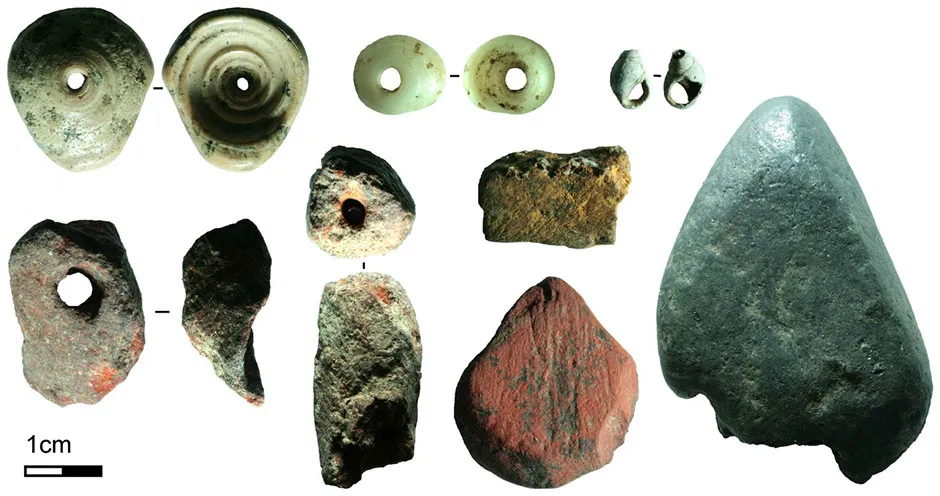An international team of researchers have found a cache of immaculately preserved bone arrowheads in the cave of Fa-Hien Lena, deep in the heart of Sri Lanka's rainforests. The find is evidence of the earliest use of bows and arrows anywhere outside of Africa, they say.
The team, made up of researchers from the Max Planck Institute for the Science of Human History (MPI-SHH) in Germany, Griffith University in Australia and the Department of Archaeology, Government of Sri Lanka, say the bone arrowheads are around 48,000 years old, and were likely used to hunt difficult-to-catch rainforest prey such as monkeys and squirrels.

“The fractures on the points indicate damage through high-powered impact – something usually seen in the use of bow-and-arrow hunting of animals,” said lead author Michelle Langley of Griffith University. “This evidence is earlier than similar findings in Southeast Asia 32,000 years ago and is currently the earliest clear evidence for bow-and-arrow use beyond the African continent."
The arrowheads were found alongside a host of other tools may have been used for freshwater fishing in nearby tropical streams, as well as the working of fibre to make nets or clothing, and other decorative items. Together, the finds point to the development of a complex, early human social network in the tropics of South Asia.
Read more about ancient humans:
- Fossil footprints 'provide a tantalising snapshot of humankind’s earliest days'
- Ancient humans arrived in Europe 'far earlier than previously thought'
“We also found clear evidence for the production of coloured beads from mineral ochre and the refined making of shell beads traded from the coast, at a similar age to other 'social signalling' materials found in Eurasia and Southeast Asia, roughly 45,000 years ago," said Langley.
The findings highlight the fact that archaeologists can no longer link specific technological, symbolic, or cultural developments in early humans to a single region or environment, the researchers say.

“Humans at this time show extraordinary resourcefulness and the ability to exploit a range of new environments," said co-author and Director at the MPI-SHH Nicole Boivin.
“These skills enabled them to colonise nearly all of the planet's continents by about 10,000 years ago, setting us clearly on the path to being the global species we are today.”
Reader Q&A:Which were the first ancient cultures to make music?
Asked by: Caroline Jones, London
In 1996, two teams of archaeologists claimed to have found fragments of simple flute-like instruments at Neanderthal sites in Slovenia and the Neander Valley in Germany.
Both were made from bone - a cave bear's femur and a mastodon's tusk - in which rows of holes had been drilled at intervals that would allow the bones to make musical notes. If confirmed, this would mean that these early humans were making music at least 50,000 years ago, and possibly longer.
Read more: